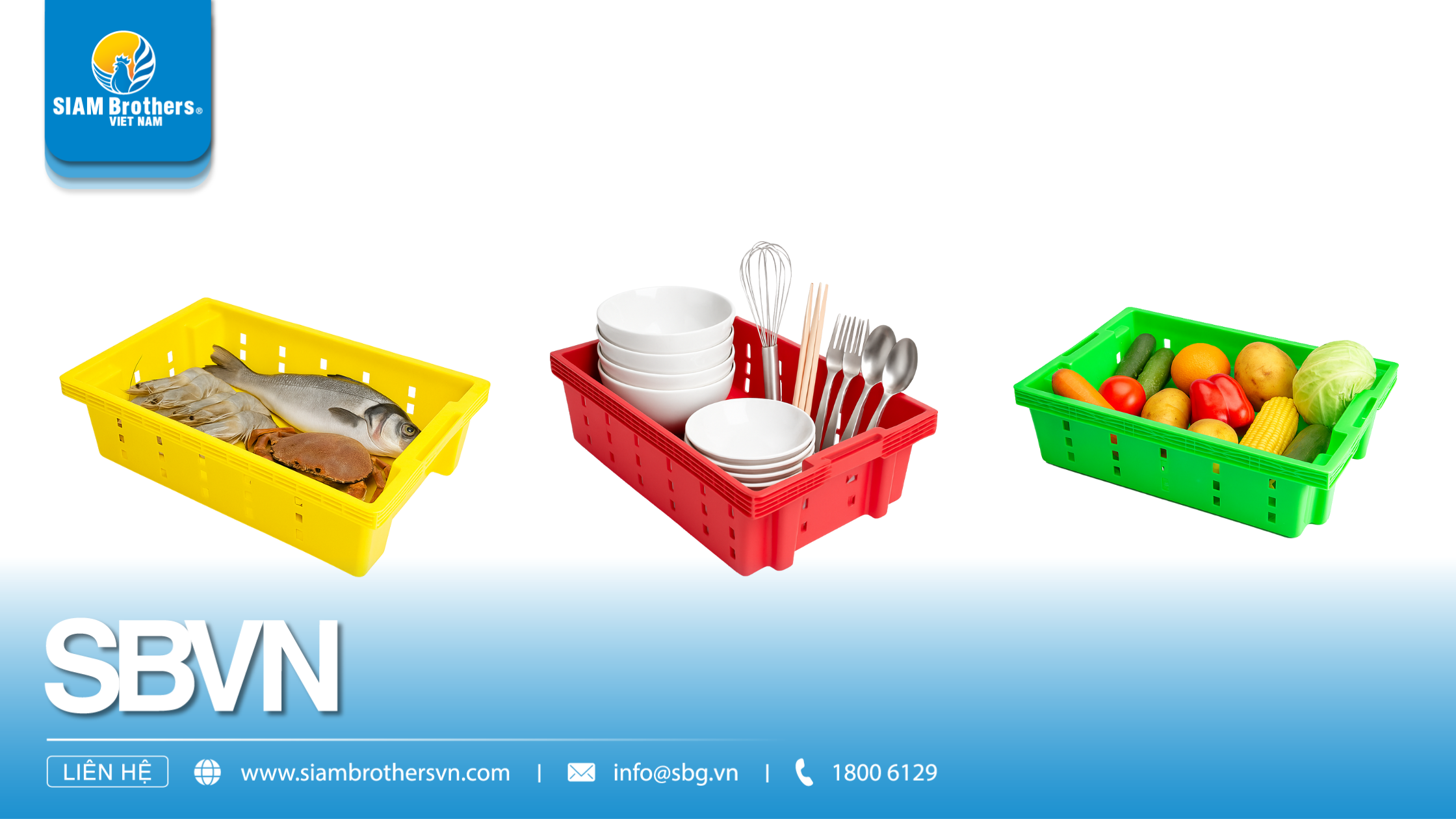Are you looking for a multi-purpose tray that is not only durable and easy to use but also tailored to your specific needs—whether it's for fish farming, vegetable planting, or food storage? In reality, not every tray labeled as "multi-purpose" is truly versatile unless you understand its materials, design, and intended applications.
In this article, SIAM Brothers Vietnam will help you identify and compare the three most common types of multi-purpose trays: trays for aquaculture, gardening, and food handling. Through a detailed comparison of materials, design features, durability, and real-world use, you'll be able to choose the most suitable tray for your specific needs—whether for large-scale operations or everyday household use.
1. What Is a Multi-Purpose Tray?
A multi-purpose tray is designed with flexible structure, durable materials, and a wide range of applications. Depending on its intended use, each tray may vary in size, depth, wall thickness, and drainage capability.
You’ll often find multi-purpose trays in fish farms—where trays need to withstand saltwater and physical impact; in home vegetable gardens—where good drainage and airflow are essential; or in food processing facilities—where hygiene and safety are non-negotiable.
Thanks to their adaptability and high practicality, multi-purpose trays have become an essential solution for optimizing workspaces, reducing operational costs, and increasing productivity—regardless of your scale of production.
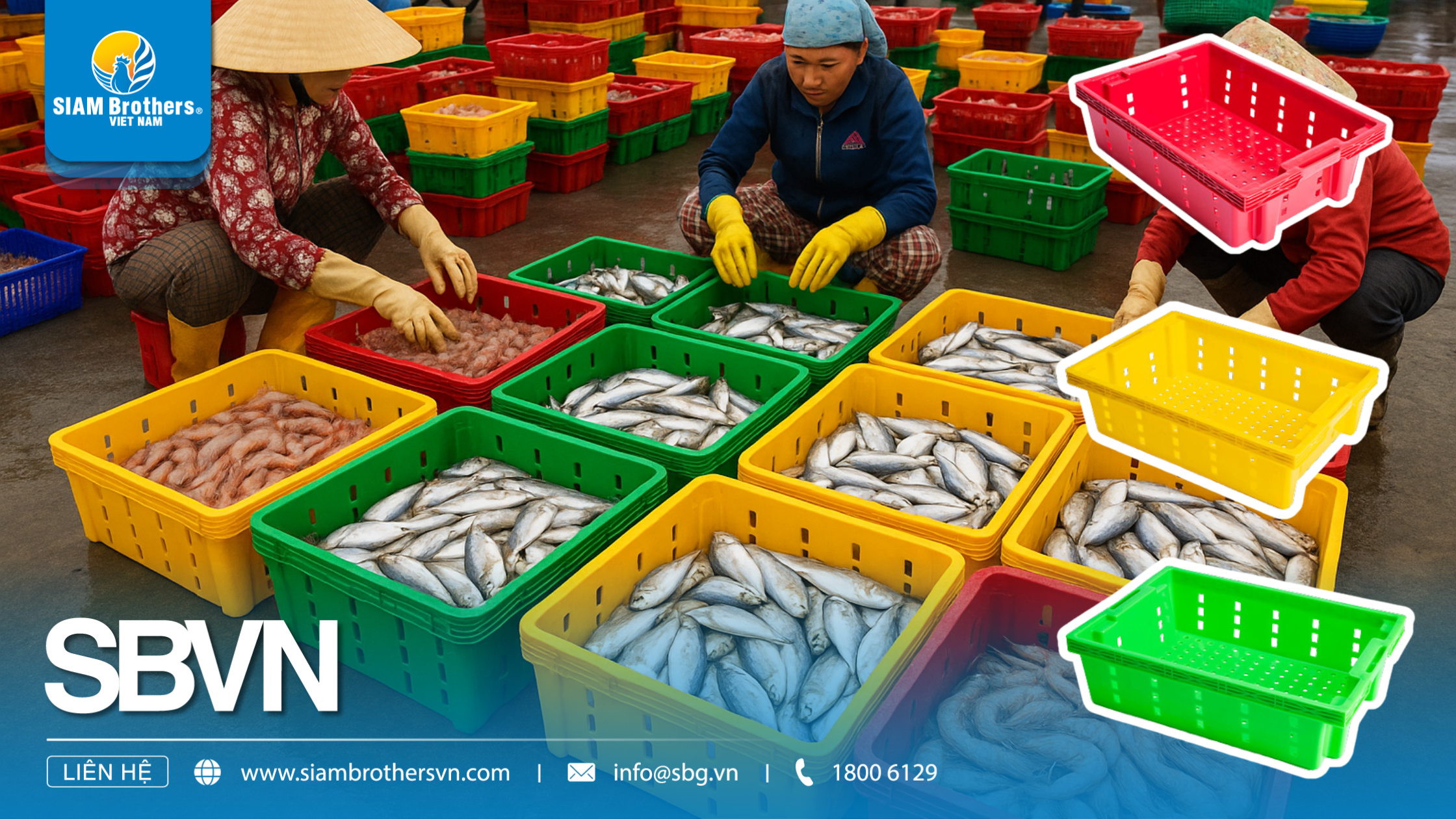
2. Classification of Multi-Purpose Trays Based on Use
Not every multi-purpose tray is suitable for every task. Depending on the environment, industry, and actual usage requirements, you’ll need to choose a tray with the right design and material. Below are the three most common types of multi-purpose trays recommended by SIAM Brothers Vietnam:
2.1 Fish Trays – For Aquaculture, Ponds, and Hatcheries
- Specialized material: Made from PP or HDPE plastic, resistant to corrosion, UV rays, and saltwater.
- High durability: Built to withstand outdoor conditions, ideal for fish farms, hatcheries, or recirculating aquaculture systems (RAS).
- Flexible design: Tall walls, flat bottom, stackable for space-saving transport; some models include optional drainage holes.
- Applications: Transporting fingerlings, sorting seafood.
Pro tip: If you’re in the aquaculture industry, choose multi-purpose trays with thick walls and anti-slip surfaces for safety during handling.
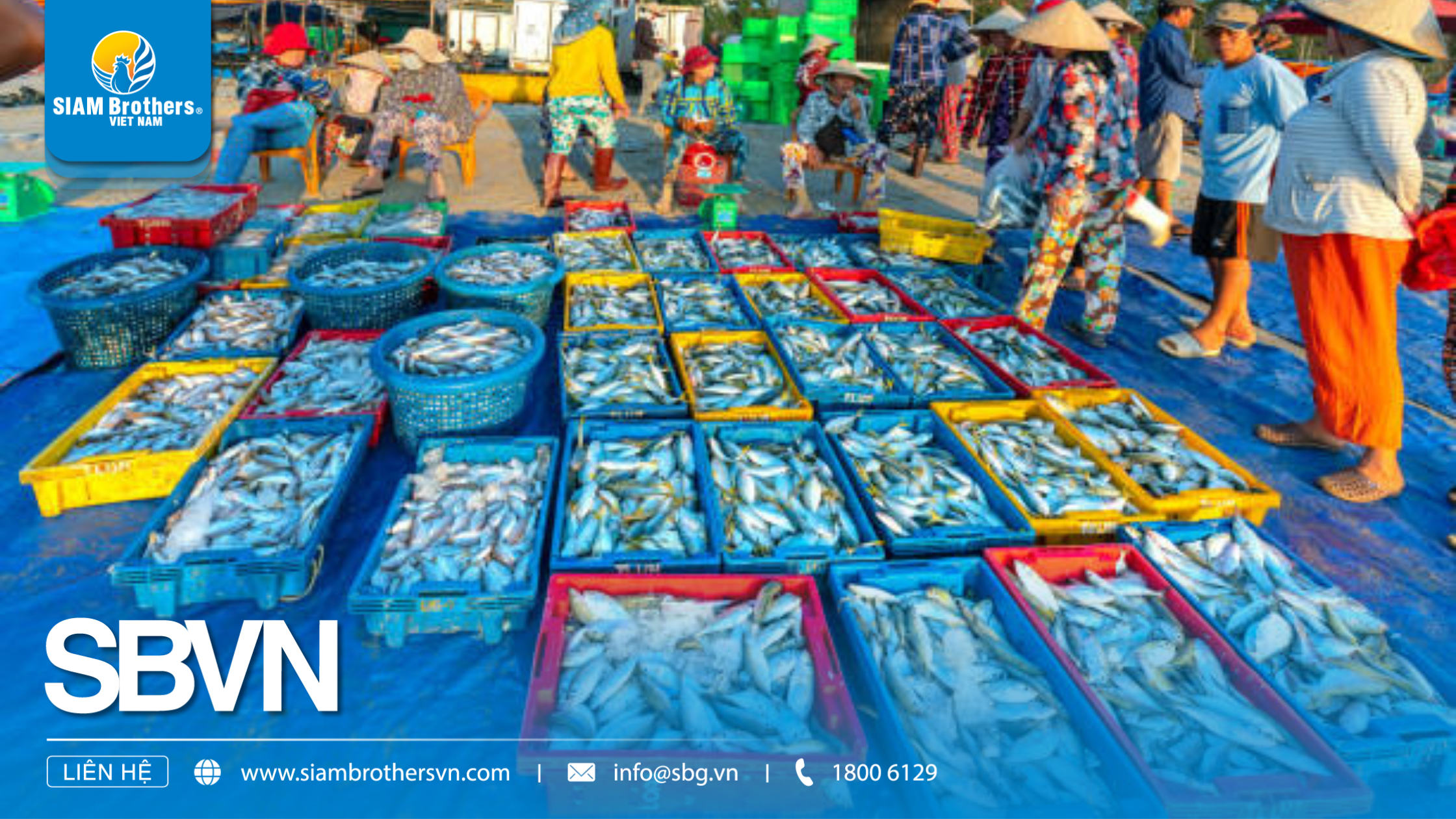
2.2 Agricultural Trays – Smart Gardening at Home or on the Farm
- Safe material: Usually made from virgin plastic, free from harmful substances, ideal for clean vegetable production.
- Optimized drainage: Available with or without bottom holes depending on the type of plant (e.g., microgreens, seedlings, herbs).
- Space-saving design: Stackable, ideal for balconies, rooftops, greenhouses, or nursery trays.
- Reusable and durable: Easy to clean, heat-resistant, and non-deformable under sunlight.
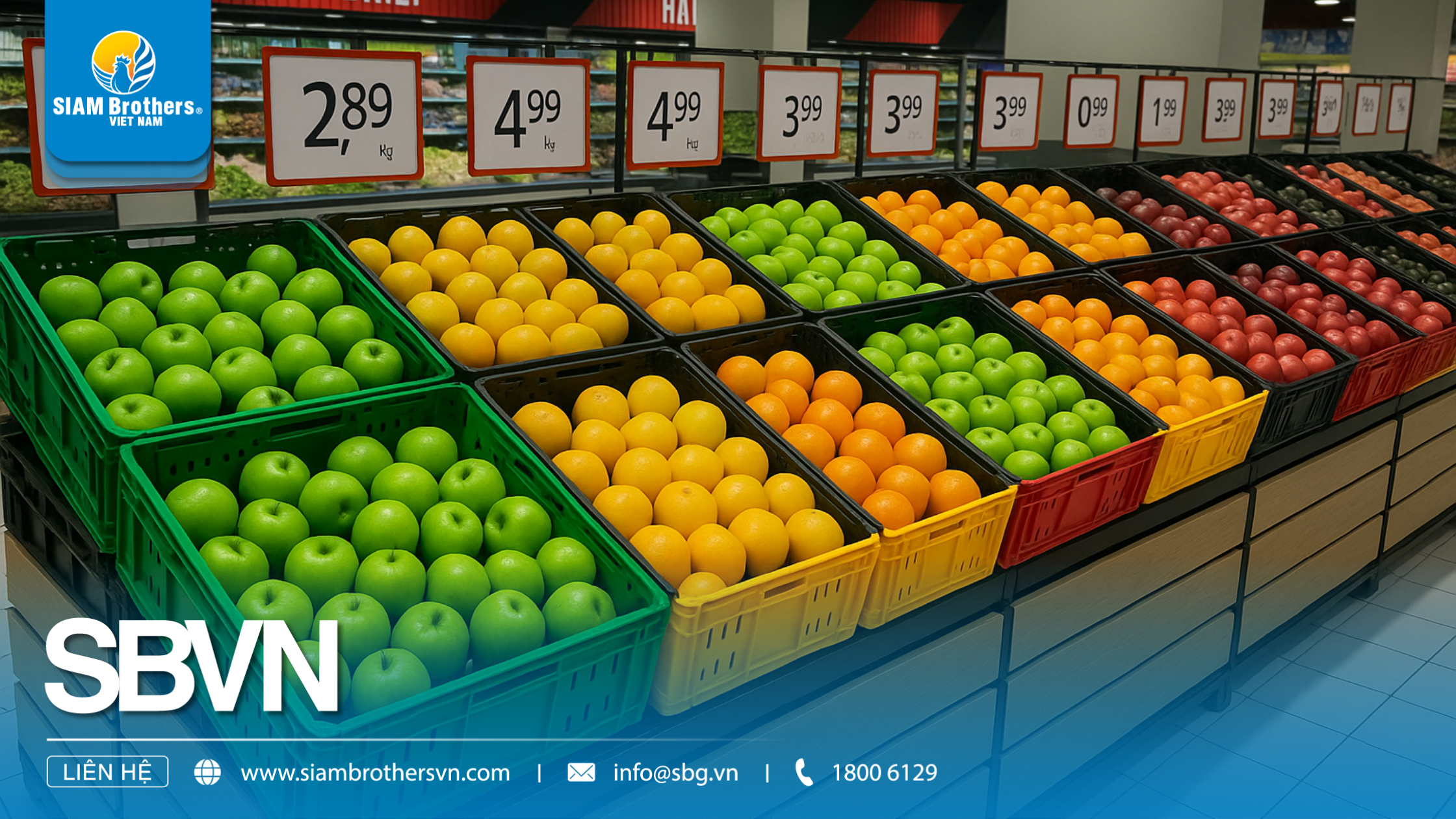
2.3 Food Trays – Hygienic, Safe, and Packing-Standard
- Food-grade standards: Made from certified food-safe plastic, odor-resistant, and easy to sanitize.
- Versatile uses: Suitable for commercial kitchens, supermarkets, wholesale markets, or seafood processing units.
- Convenient design: Compact size, built-in handles or rimmed edges for safe and efficient handling.
- Strong load capacity: Capable of supporting heavy food products during storage, packaging, and transport.
- In the food industry, hygiene and safety are top priorities. A food-grade multi-purpose tray is a crucial component in ensuring overall product quality throughout the supply chain.
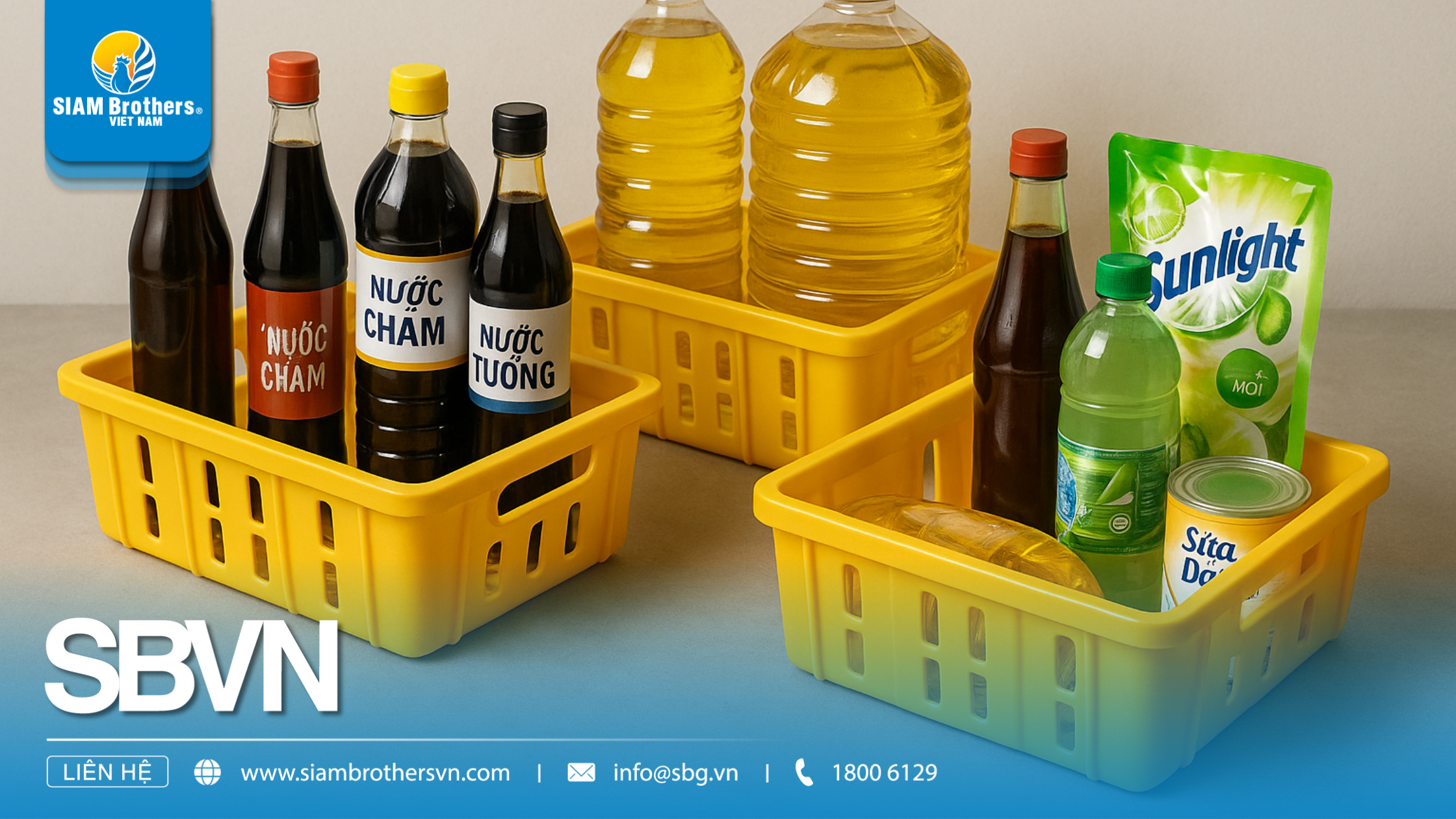
3. Comparison Table of Multi-Purpose Tray Types
| Criteria |
Fish Tray |
Gardening Tray |
Food Tray |
| Primary Use |
Storing fingerlings, transporting seafood, sorting aquatic products |
Seed starting, home gardening, balcony farming, or small-scale farms |
Storing fresh food, preliminary processing, and transport in industrial kitchens |
| Main Materials |
Rigid HDPE or PP plastic, load-bearing, UV-resistant |
Safe virgin plastic, reusaF |
ood-grade plastic, non-toxic, easy to clean |
| Key Features |
Thick, impact-resistant, saltwater-resistant |
Built-in drainage holes, stackable, breathable |
Low walls, lightweight, easy to carry, odor-resistant |
| Durability |
High – ideal for long-term outdoor use, deformation-resistant |
Medium – ideal for home gardening |
Medium to high – depending on food type stored |
| Aesthetics |
Minimalist, functional over visual appeal |
Compact, colorful |
Clean, bright appearance – suitable for food environments |
| Common Applications |
Hatcheries, ponds, fishing ports, seafood processing facilities |
Home gardens, balconies, greenhouses, organic farms |
Restaurants, supermarkets, wholesale markets, cold storage facilities |
Which Multi-Purpose Tray Should You Choose?
Choosing the right multi-purpose tray depends entirely on your intended use and working environment:
- For aquaculture: Prioritize fish trays with high resistance to water and heavy loads.
- For home gardening: Select gardening trays with good drainage and easy stacking.
- For food processing and storage: Use food-grade trays that are odor-resistant and easy to sanitize.
SIAM Brothers Tip: Consider how frequently the tray will be used and the environment (exposure to sun, rain, saltwater, etc.) before making a choice—because not every tray is truly “multi-purpose” in practice!
4. Frequently Asked Questions About Multi-Purpose Trays
When choosing a multi-purpose tray for real-world applications, customers often have questions about materials, durability, versatility, and safety. Below are some of the most common questions received by SIAM Brothers Vietnam.
4.1 Can Multi-Purpose Trays Be Used Outdoors?
Yes. Most multi-purpose trays are made from PP or HDPE plastic, which are heat-resistant, UV-resistant, and highly durable—ideal for hot, humid, or rainy outdoor conditions. However, always check the product specifications to ensure long-lasting use.
4.2 Can Gardening Trays Be Used as Fish Trays (and Vice Versa)?
While both types are made from durable plastic, they are designed for different purposes. Gardening trays usually have drainage holes, while fish trays have sealed bottoms to retain water. For optimal results, it's best not to use them interchangeably.
4.3 Are Multi-Purpose Trays Safe for Food Storage?
Yes—if they are made from food-grade virgin plastic. SIAM Brothers' multi-purpose trays meet food safety standards, are BPA-free, non-absorbent, and easy to clean—making them suitable for food contact applications.
4.4 Are Multi-Purpose Trays Easy to Clean and Reuse?
Absolutely. One of the biggest advantages of multi-purpose trays is their smooth, non-stick surface. They can be easily washed with water or mild sanitizers without affecting their durability or safety.
4.5 Do SIAM Brothers Multi-Purpose Trays Come with a Warranty?
Yes. All trays manufactured by SIAM Brothers undergo strict quality control and are covered under our product warranty. We also provide prompt replacements for any factory defects.
Choosing the right multi-purpose tray is not just about picking a container—it’s about optimizing workflows and protecting your productivity. Whether you're running a fish hatchery, tending to a home garden, or working in food preparation, each type of tray offers specific benefits when used in the correct context.
If you’re seeking a high-durability, easy-to-clean solution that adapts to multiple industries, investing in a high-quality multi-purpose tray is a smart, cost-effective choice in the long term.




